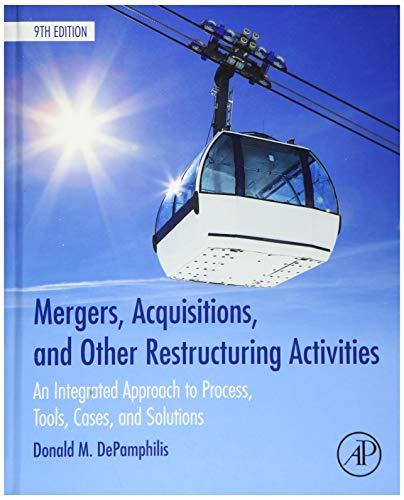Actions required to gain regulatory approval usually involve selling off some portion of the combined business in
Question:
Actions required to gain regulatory approval usually involve selling off some portion of the combined business in countries where increased concentration is a concern. In doing so, the economics of the deal may be changed profoundly, especially when the assets to be divested represent a significant portion of the anticipated synergies resulting from combining the firms. The greatest synergy often comes from buying businesses whose operations in a country are complementary to those of the acquirer. For example, by buying a competitor, the acquirer gains potential pricing power and cost saving opportunities by eliminating duplicate overhead, production facilities, and distribution channels. Because the acquirer is under duress to sell the assets stipulated under their agreement with the regulators, assets may be sold at less than fair market value. Once regulatory approval is achieved, integrating the target’s operations with those of the acquirer can be even more challenging than dealing with regulators. Labor laws in developed and emerging countries may limit the acquirer’s ability to terminate “redundant” workers or allow acquirers to do so only at great expense. Country cultures may also inhibit the ability of the acquirer to introduce more modern management, production, and distribution methods. All of these factors contribute to delaying and possibly preventing realization of anticipated synergies. The following narrative describes global beer industry leader Anheuser-Busch InBev’s (AB InBev) 2016 takeover of the second largest beer company SABMiller. The combined firms’ leadership position should result in lower relative costs than competitors due to economies of scale, brand recognition, and the ability to negotiate lower raw material costs. The new firm could also experience greater pricing power because of brand recognition and differentiation. But in closing this deal, AB InBev created a substantial hurdle to overcome. To complete the transaction, the firm had to pay an exorbitant 50% premium to SABMiller’s September 14, 2015 share price, the day prior to initial media speculation about the deal. Even though AB InBev’s management has a well established reputation for aggressive cost cutting, earning back this premium is likely to prove daunting. The focus in this discussion will be on the implications of regulatory approval and post merger integration on deal value. With market growth tepid overall and declining in some regions, the global beer industry is undergoing major changes as people in many developed countries are turning to locally brewed craft beer. Furthermore, future growth globally is expected to come mainly in emerging countries and in regions such as Africa.....
Discussion Questions:
1. What are the key assumptions implicit in Anheuser-Busch InBev’s takeover of SABMiller?
Which do you believe are the most critical? Be Specific.
2. Why did the deal include restricted stock in AB InBev’s stock and cash options rather than unrestricted shares? How does the lockup on the restricted stock included in AB InBev’s stock and cash combination affect the value of these shares?
3. What were the primary motives for the merger from AB InBev’s perspective stated in the case? Review the common motives for cross-border deals discussed in this chapter; speculate as to what other motives for this acquisition other than those indicated in the case might AB InBev have had in buying SABMiller.
4. What alternatives to acquisition could AB InBev have pursued? Speculate as to why a takeover was the preferred option?
Step by Step Answer:

Mergers Acquisitions And Other Restructuring Activities
ISBN: 9780128016091
9th Edition
Authors: Donald DePamphilis





